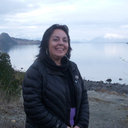Maternal and developmental toxicity of low doses of cytosine arabinoside in mice.
Atslēgvārdi
Abstrakts
1-beta-D-Arabinofuranosylcytosine (Ara-C), an effective drug for the treatment of leukemia and breast cancer, was evaluated for developmental toxicity in pregnant Swiss mice. Ara-C was administered by intraperitoneal injection on gestational days 6-15 at doses of 0, 0.5, 2, and 8 mg/kg/day. Maternal observations included clinical signs, body weight change, food consumption, and gross evaluation of organs and uterine contents at necropsy (day 18). Live fetuses were examined for external, visceral, and skeletal alterations. Maternal toxicity was observed at 2 and 8 mg/kg/day, as evidenced by a significant decrease in body weight gain and food consumption during the treatment period. Significantly increased early and late resorptions and reduced number of live fetuses per liter as well as decreased fetal body weight were observed at 8 mg/kg/day. At 2 mg/kg/day, the incidence of cleft palate, renoureteral agenesis or hypoplasia, and poly- or oligodactyly was significantly increased, whereas fetal weight was reduced at 0.5 mg/kg/day. Thus, the developmental no-observed-adverse-effect-level (NOAEL) of Ara-C in the pregnant mouse is lower than 0.5 mg/kg/day, while the NOAEL for maternal toxicity is 0.5 mg/kg/day. We believe that exposure to this agent ought to be avoided during organogenesis.


